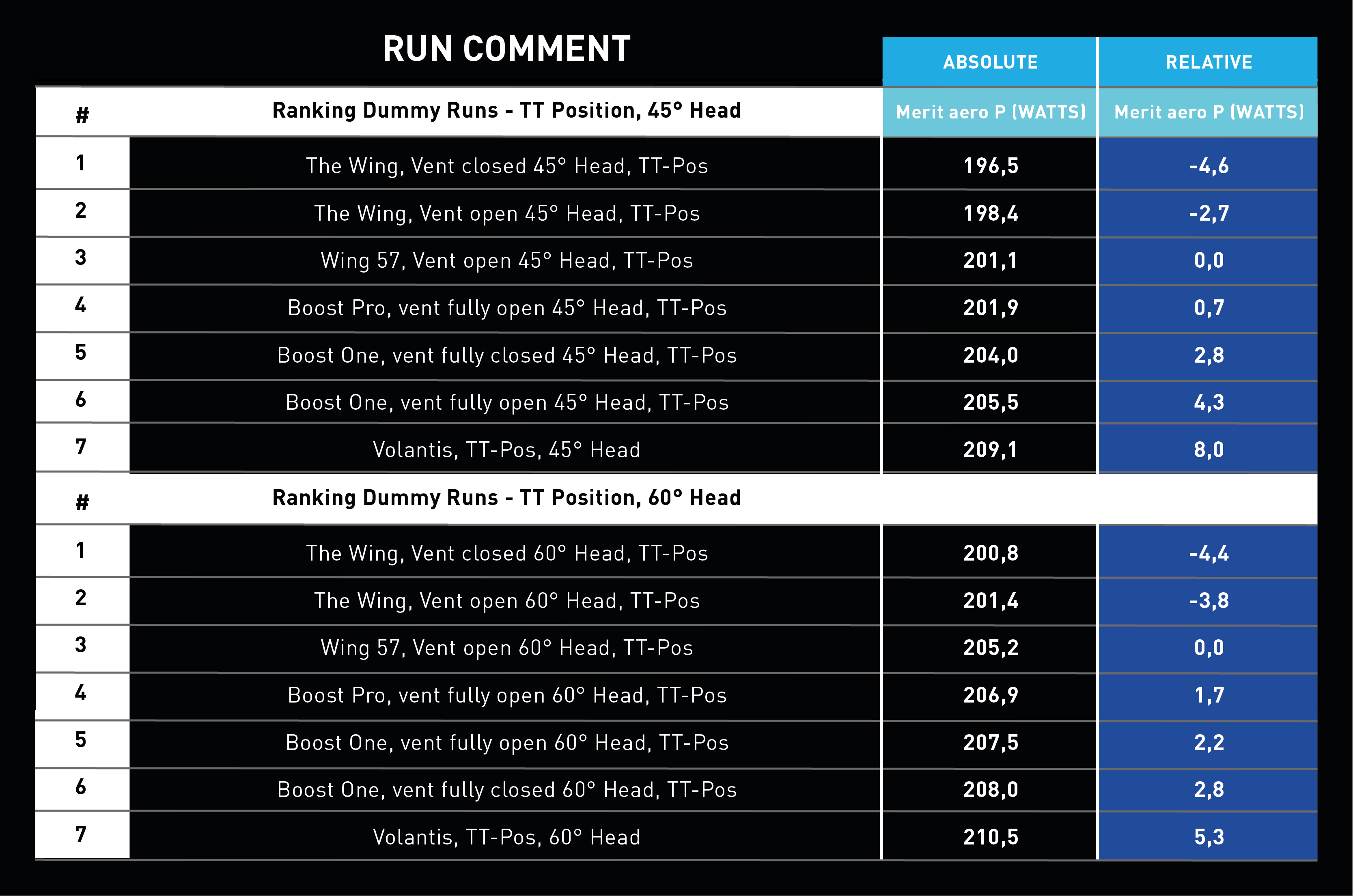
AERO-HELMET TECHNOLOGY
SAVE WATTS AND BREAK THAT TIME
This report shows a private wind tunnel session directed by Swissside, the numer one Company in Aerodynamics, to collect scientific data on the performance of the Rudy Project Aero Helmet.

WIND TUNNEL TESTING METHODOLOGY
All measurements were made with two different riders and one dummy in different setups to simulate realistic body and head positions. All tests made with the static truncated dummy (with cut off lower arms and lower legs) were made in order to obtain a repeatable and accurate measurement of helmet performance. For time trial / triathlon helmets, the dummy body position was set to a typical flat position with the head measured in up to 2 different angles relative to the road - 45° (standard head position),and 60° (low head position).The wind tunnel results showed a consistent correlation between the two different experiments demonstrating the applicability of the data for other riders. All measurements were made at 45km/h over a full yaw (cross-wind) range of -20° to +20°. The Swissside weighting system for 'triathletes' is applied to the results measured at all angles over the yaw range, to calculate one aero drag performance number in watts for each helmet. This is referred to as 'merit' aero p (w) in the data tables.
SAVE WATTS WITH YOUR HEAD POSITION
AERODYNAMIC PERFORMANCE CAN VARY ACCORDING TO HEAD POSITION



Image banner
Give customers details about the banner image(s) or content on the template.
SAVE WATTS WITH YOUR HEAD POSITION
AERODYNAMIC PERFORMANCE CAN VARY ACCORDING TO HEAD POSITION
Multicolumn
-

AERO HELMET RUNS ON DUMMY - TT POSITION
-

HELMETS LINE UP RANKING
- No considerable difference was noticed with use of sunglasses versus integrated visor
- Open vent helmet configurations were proven to be the fastest.
- Time savings are calculated using an average man weighing 75kg., riding 8kg bike, producing 200 watts on a 70.3 distance with 500 m climbing


